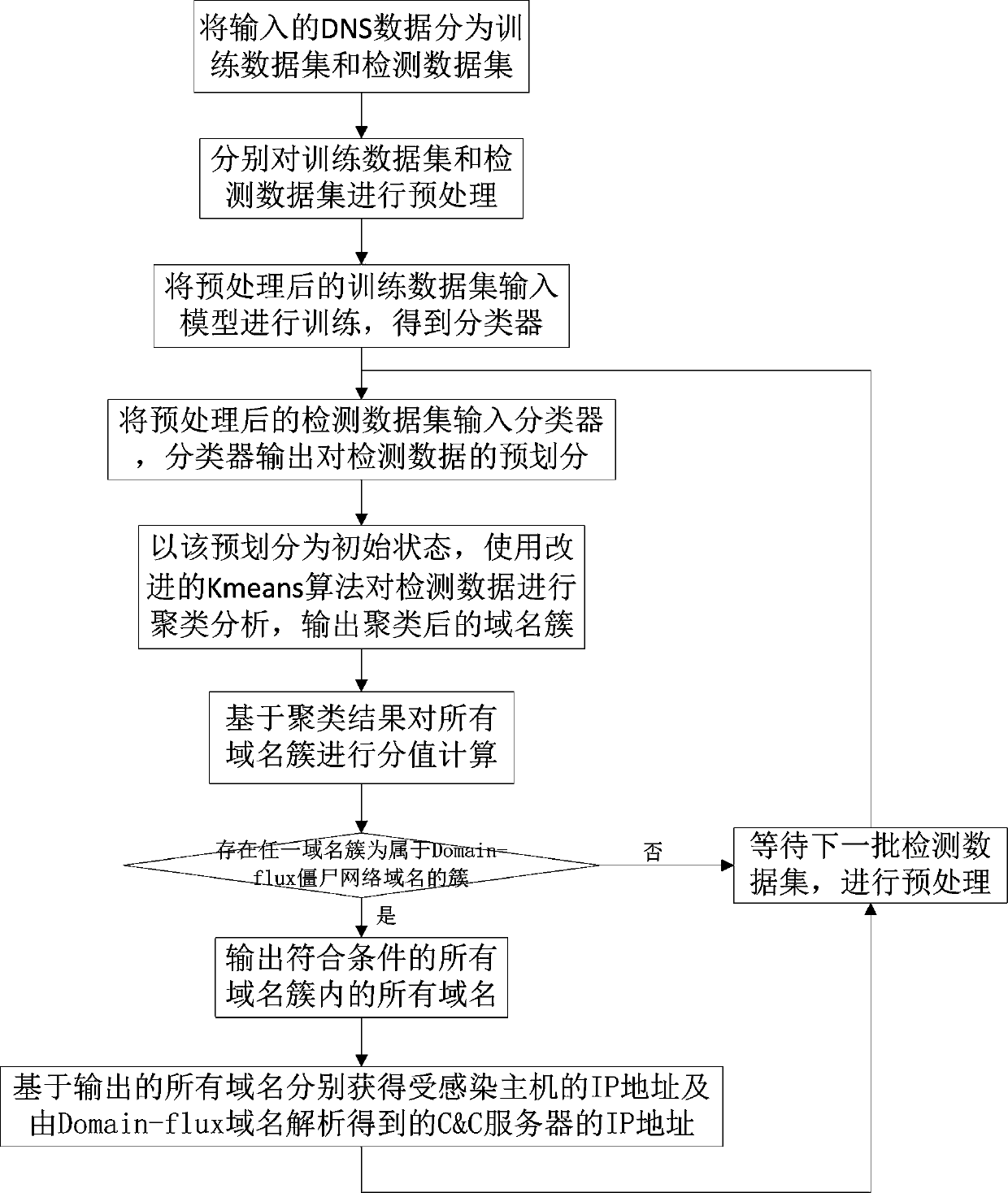Domain-floux botnet detection method based on hybrid learning
A botnet and hybrid learning technology, which is applied in the field of domain-flux botnet detection based on hybrid learning, can solve the problem of high time complexity of the training set
- Summary
- Abstract
- Description
- Claims
- Application Information
AI Technical Summary
Problems solved by technology
Method used
Image
Examples
Embodiment Construction
[0035] The present invention will be described in further detail below in conjunction with the examples, but the protection scope of the present invention is not limited thereto.
[0036] The invention relates to a method for detecting a Domain-flux botnet based on hybrid learning, and the method includes the following steps.
[0037] Step 1: Divide the input DNS data into a training dataset and a detection dataset.
[0038] In the step 1, the DNS data includes DNS traffic and DNS logs.
[0039] Step 2: Preprocess the training dataset and the detection dataset respectively.
[0040] In the step 2, the preprocessing includes filtering the non-compliant or illegal DNS in the training data set and the detection data set and extracting features from the remaining DNS after filtering.
[0041] The features include domain name length, domain name level, 1-gram common degree, 2-gram common degree, 3-gram common degree, accessed time span, average TTL, total number of resolved IPs, ...
PUM
 Login to View More
Login to View More Abstract
Description
Claims
Application Information
 Login to View More
Login to View More - R&D
- Intellectual Property
- Life Sciences
- Materials
- Tech Scout
- Unparalleled Data Quality
- Higher Quality Content
- 60% Fewer Hallucinations
Browse by: Latest US Patents, China's latest patents, Technical Efficacy Thesaurus, Application Domain, Technology Topic, Popular Technical Reports.
© 2025 PatSnap. All rights reserved.Legal|Privacy policy|Modern Slavery Act Transparency Statement|Sitemap|About US| Contact US: help@patsnap.com

